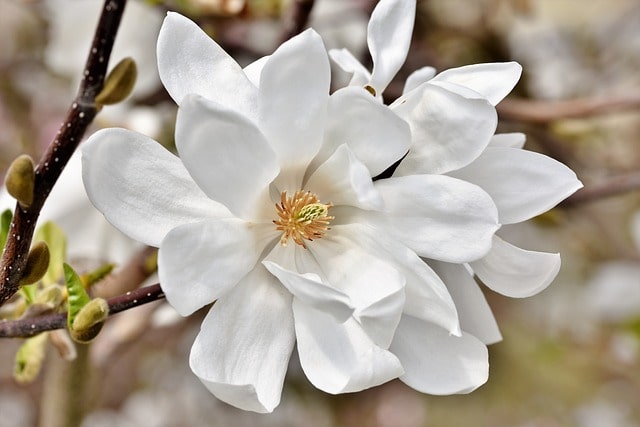How to Plant Magnolia Seeds?
Introduction
Magnolia trees are revered for their large and striking blossoms, which are symbolic of grace and beauty in many cultures. From the majestic Southern Magnolia to the serene Japanese varieties, these trees can signify strength, perseverance, and an enduring love of nature. If you are captivated by these magnificent flora and want to grow your own from scratch, planting magnolia seeds is an enriching endeavor that requires some patience but can be deeply rewarding. Below is an extensive guide providing a step-by-step process on how to propagate magnolia seeds.
Understanding Magnolia Seeds
Before you start planting, it helps to understand the kind of environment magnolia seeds flourish in. The magnolia family includes a wide range of botanical varieties, each demanding unique care; however, most magnolia seeds generally follow the same basic principles for planting and care.
The Best Time to Plant Magnolia Seeds
- The ideal time to plant magnolia seeds is in the late fall.
- This period allows the naturally occurring stratification process (cold treatment) to take place over the winter, which is vital for the seeds to break dormancy.
Seed Collection and Storage
- Collect seeds from mature magnolia cones in the fall as they begin to open.
- Clean the seeds by removing the outer red coating, revealing the dark seed inside.
- If you’re not planting them immediately, store the seeds in a sealed container inside the refrigerator until ready to plant.
Seed preparation
Remove the seeds from the cone and clean them by gently removing the fleshy aril. You can do this by soaking the seeds in warm water overnight, which also helps break through any chemical dormancy by softening the seed coat. After the soak, scrub the seeds with a soft brush to clean them completely as any residue can foster fungal growth and negatively impact germination.
Stratification Process
Why Stratify? In nature, magnolia seeds would go through a cold period called stratification to break dormancy. This process mimics the natural conditions seeds would experience over winter and is crucial for germination.
Stratification Steps
To stratify magnolia seeds:
- Mix the seeds with a moist (not wet) medium like sand or vermiculite placed in a plastic bag.
- Store the mixture in the refrigerator, not the freezer, to provide a cold yet not freezing environment—typically between 35°F and 40°F (1.6°C – 4.4°C).
- Maintain the stratification period for about 90 to 120 days. During this time, occasionally check the mixture to ensure it remains moist and allow for a bit of ventilation.
Seed Starting Indoors
Creating the Perfect Environment
Once the stratification period is finished, it’s time to start your seeds indoors, especially in colder climates. For this:
- Use a well-draining seed starting mix, which you can purchase or make on your own from equal parts peat, perlite, and vermiculite.
- Fill seed trays or pots with the mix and lightly press your stratified seeds into the surface.
- Cover the seeds with a thin layer of the substrate.
- Gently water the mix to keep it moist but not saturated.
Ensure Adequate Light and Warmth
- Place the trays or pots in a warm place—around 70°F to 75°F (21°C to 24°C)—this can be achieved using a heat mat designed for seed starting.
- Ensure that your magnolia babies are exposed to plenty of light. Use a grow lamp if you are starting seeds early in the season or if natural sunlight is insufficient.
Watering and Patient Waiting
- Avoid overwatering, as seeds and young seedlings are especially prone to rot. Allow the surface of the soil to dry slightly between watering.
- It is essential to arm yourself with patience, as magnolia seeds can take anywhere from two weeks up to several months to germinate.
Transplanting Seedlings
When to Transplant
- You should only consider transplanting magnolia seedlings outside once they have developed a set of true leaves and are sturdy enough to handle outdoor conditions.
- Be sure to wait until all threat of frost has passed, and outdoor temperatures are consistently warm before introducing your seedlings to the outdoors.
- Acclimation: Easing The Transition Begin hardening off the seedlings to outdoor conditions by gradually increasing their exposure to outdoor temperatures, wind, and sunlight over a week or more. Starting with a few hours and gradually increasing to a full day.
The Right Spot
Choose a location for your magnolia tree that receives full sun to part shade, with well-drained soil. Consider the mature size of the magnolia when deciding on the location to avoid future issues with roots or branches.
Caring for Young Magnolia Trees
Protection and Early Care
- As with any juvenile plant, ensure the young magnolia receives ample water — about an inch per week through rain or supplemental watering.
- If pests or diseases appear, treat immediately with appropriate measures to avoid difficulties as the plant matures.
Mulching and Feeding
- Mulching helps retain moisture and regulate soil temperature — apply a layer of organic mulch around the base of your young magnolia, but avoid piling it against the stem.
- Light feedings can begin after the first year with a balanced, slow-release fertilizer.
Pruning and Shaping
- During the juvenile phase, minimal shaping can take place to form a pleasant structure yet avoid heavy pruning as this can stunt the growth of the young tree.
- Step back periodically and prune strategically, creating a strong framework of branches for the future, full-sized tree.
Conclusion
Growing magnolia trees from seeds can be challenging but also immensely satisfying. Nothing compares to watching those first tender shoots emerge and evolve into splendid flowering trees. Your efforts in collecting, stratifying, sowing, and nurturing magnolia seeds today can bloom into a testament of natural beauty and serenity in your garden for generations to come. Happy planting!

